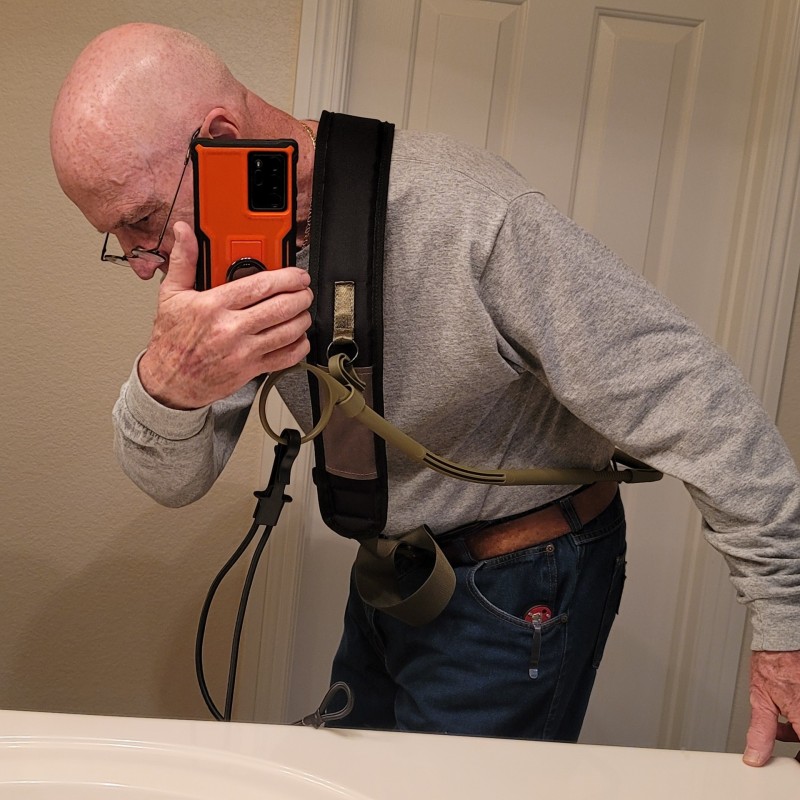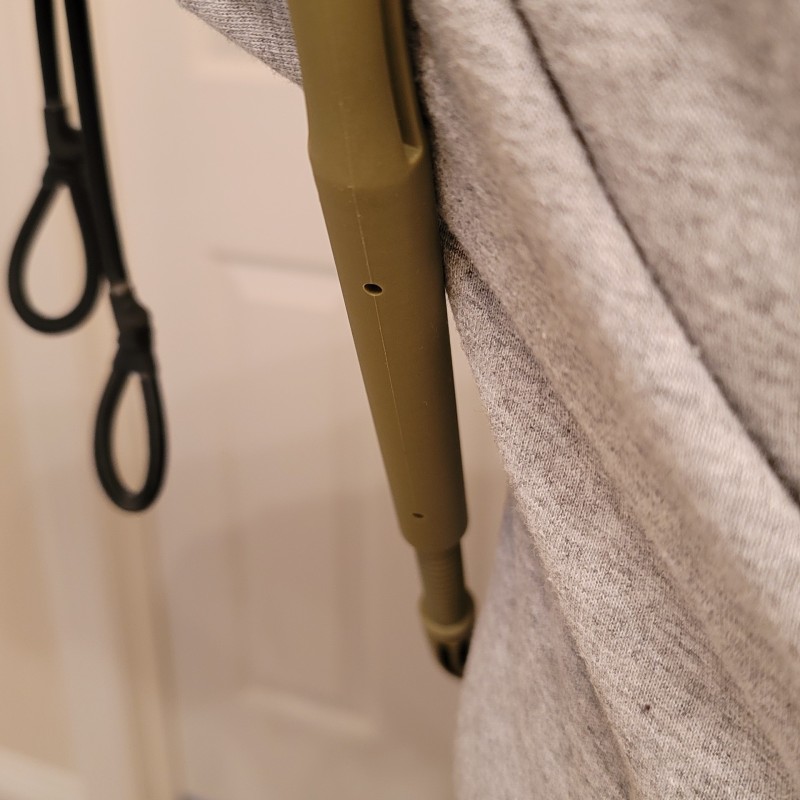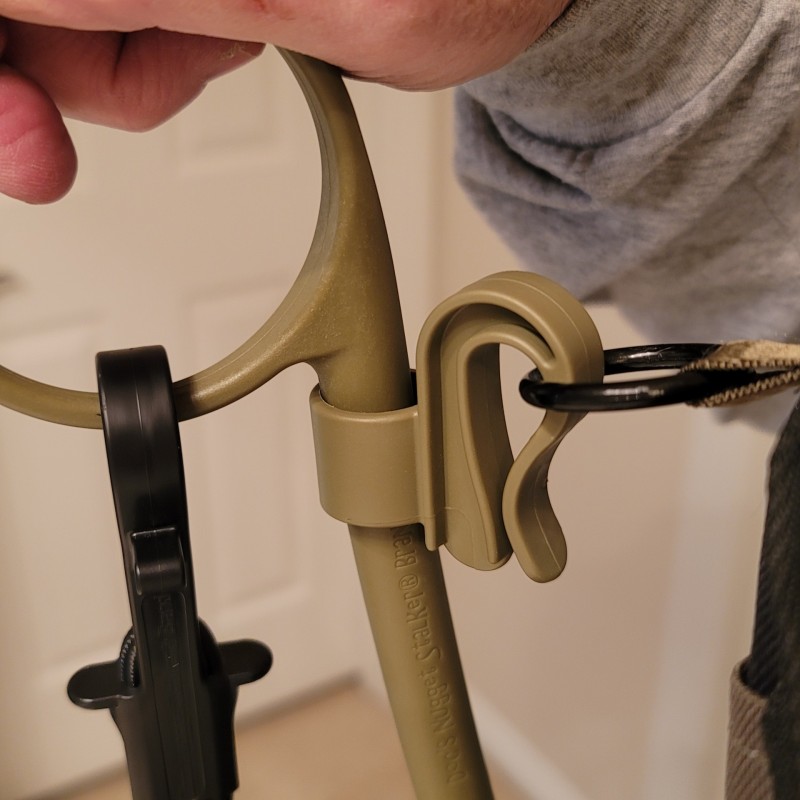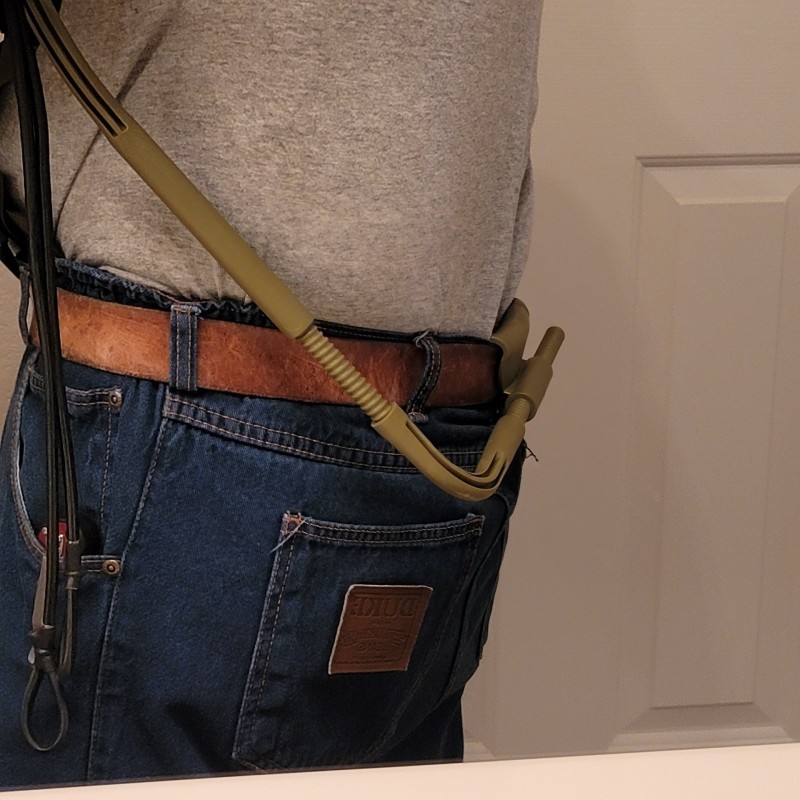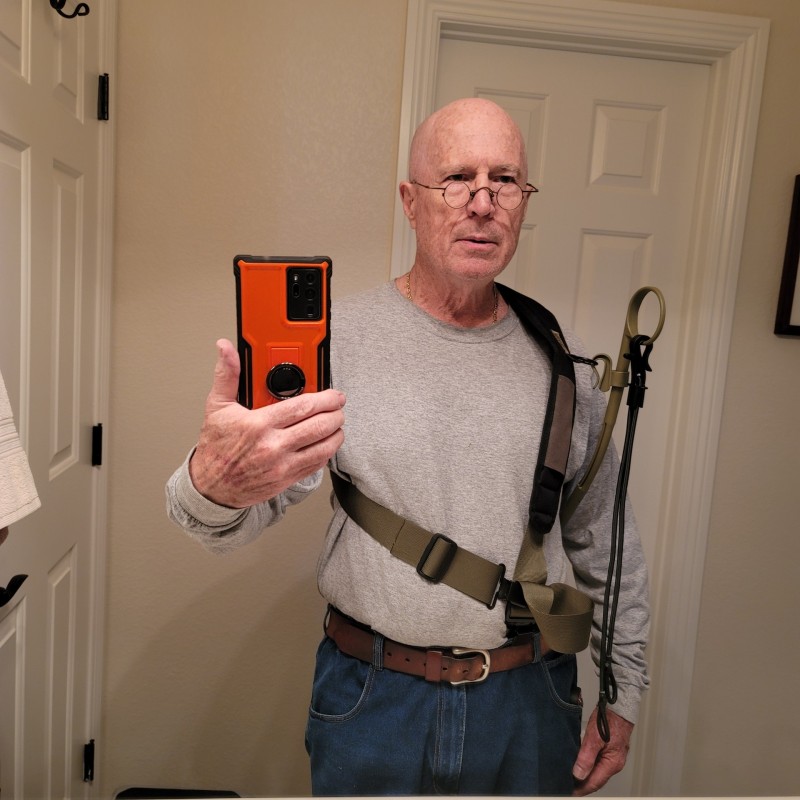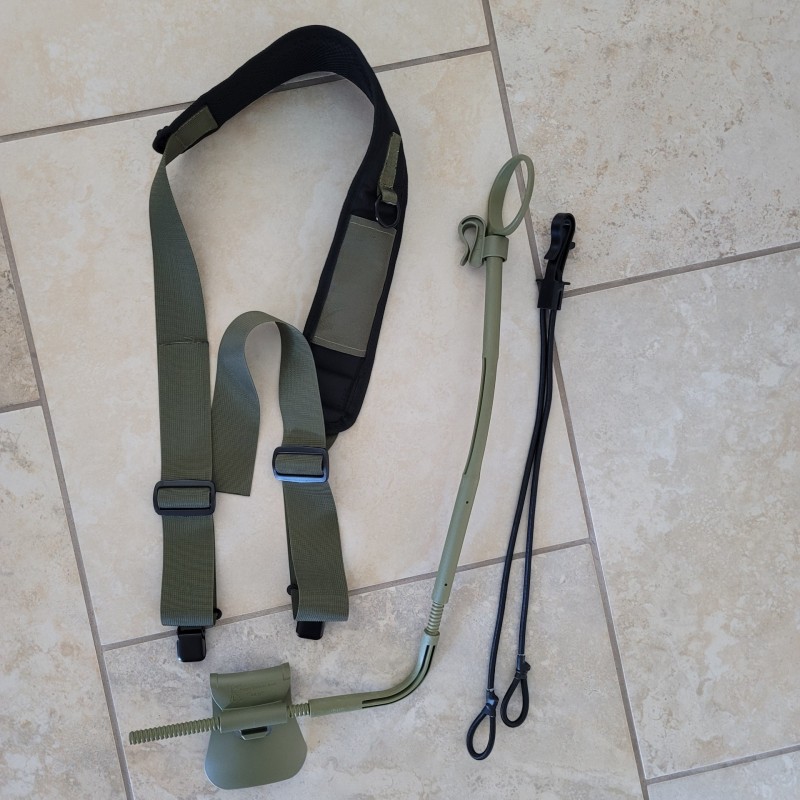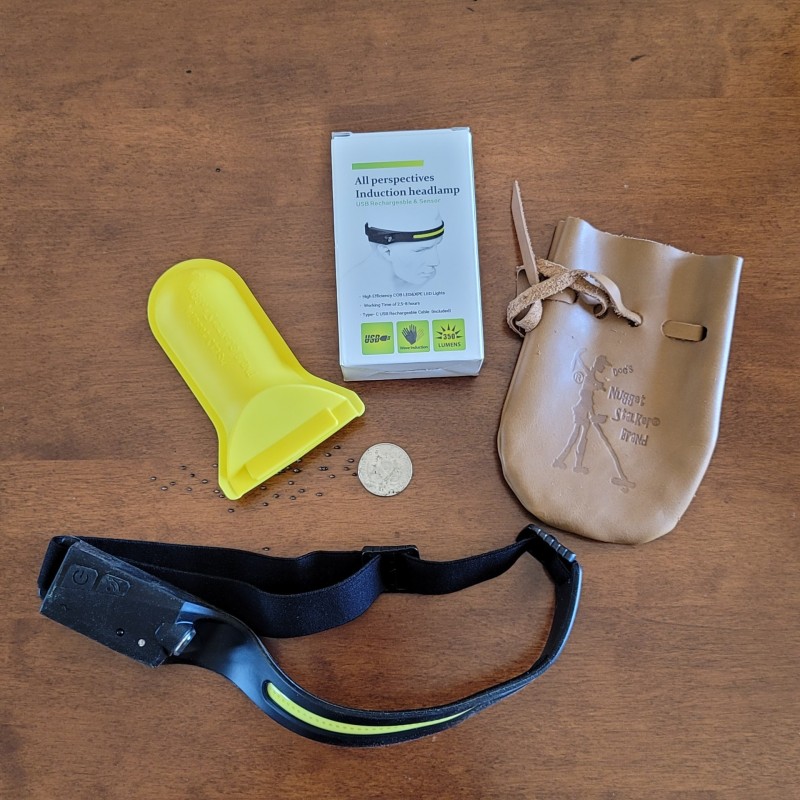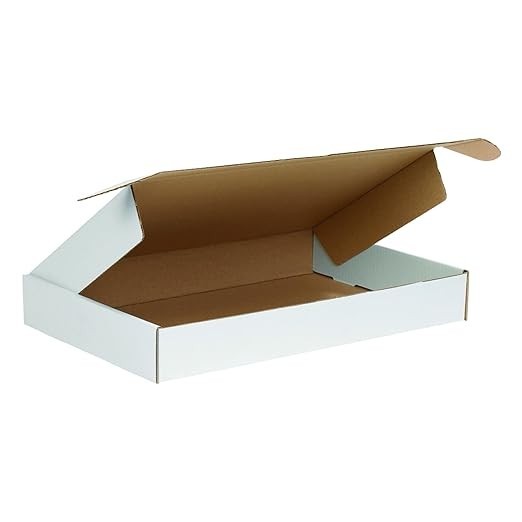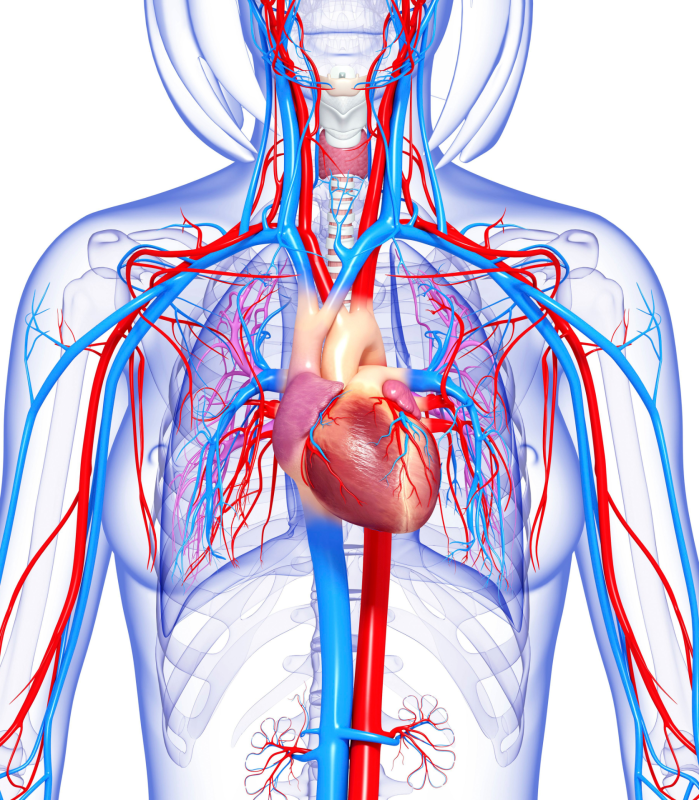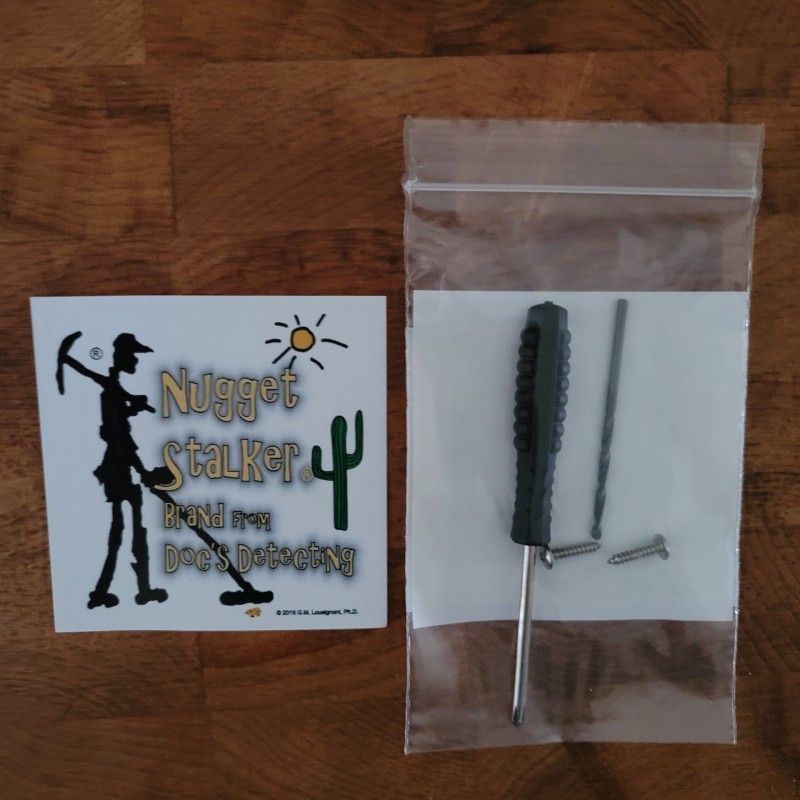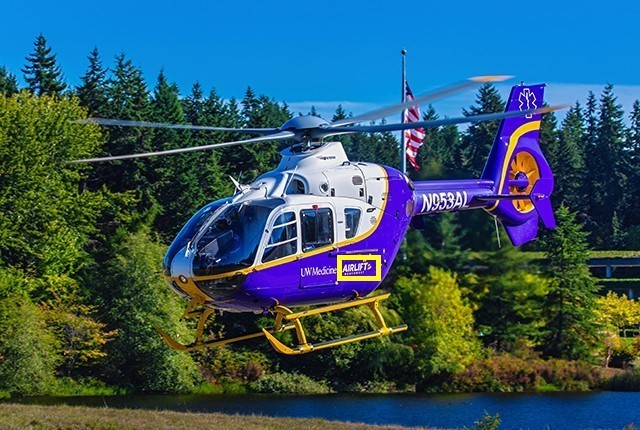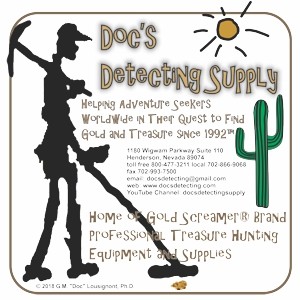
Doc
Full Member-
Posts
357 -
Joined
-
Last visited
-
Days Won
5
Doc last won the day on January 11
Doc had the most liked content!
Profile Information
-
Gender
Male
-
Location:
Henderson Nevada
Recent Profile Visitors
8,941 profile views
Doc's Achievements

Silver Contributor (4/6)
1.4k
Reputation
-
Rob Allison Detector Sales
Doc replied to Ridge Runner's topic in Metal Detecting & Prospecting Classifieds
Hey Chuck, I'm a Minelab dealer. In fact I'm a Legacy Minelab Dealer having represented Minelab since 1992. Just because I'm elderly is no reason to discriminate against me. LOL I just turned 75 April 20th. 🤣 Doc -
From Doc's Detecting. One only. $3,999. Ph 702-419-3070
-
That's great Steve, thank you for posting it again. Doc
-
Fred you are remembered! See you on down the track. Doc
-
Well anything that takes the weight off of your arm is going to be very helpful. Good to know it does not bother your neck. Even with my Ultra-Swingy Thingy if you do not adjust the harness on the back to keep the horse shoe padded shoulder straps away from your neck, you're going to be miserable, because the rig pulls on your neck instead of transferring the weight to the back of your pants. Most support harnesses will allow you to let go of the detector as long as you place the attachment point of the detector just back from the balance point. I always advise customers to attach their bungee rig to the detector, and then carefully try to suspend the detector by just the bungee. Don't completely let go you don't want a teeter totter effect where one end of the detector smashes into the ground. Once you find the balance point, move the attachment point back so the detector naturally tilts forward with the coil on the ground. Do not overdo it, because if it is too front heavy you will be using your elbow to counter balance it. You want it to hang in the correct position naturally. ALSO do not have the adjustment point too far forward where the detector is back heavy, because then you have to roll your shoulder forward to make the coil sit on the ground. On flat level ground you don't need to constantly adjust the length of the device. When Gold Prospecting you are up and down ridges and a way to quickly adjust the length of the bungee is essential to "fuss-free" detecting. When you start up a ridge you lift the coil up and the bungee goes slack, now you are carrying the weight of the detector again, in addition to climbing a hill. So having the ability to quickly readjust the bungee to take the weight off is a big plus. Doc
-
So I have seen this device up close and personal. Here's the thing I have learned after developing several Swingy Thingy's. Under no circumstances do you ever want anything around your neck. That is where the weight of the detector will be transferred to. The Cervical spine is one of the most fragile parts of the spine. At all costs do not put any unnecessary force on your cervical spine. You will suffer the consequences. You notice it says "FULLY ADJUSTABLE" Fully adjustable is not INSTANTANEOUSLY ADJUSTABLE, which all of my rigs are. You can change the length of the bungee in mid-swing without ever having to stop or miss a beat. Just trying to point out the differences. I think this device may be fine for lighter weight machines and flat ground where you are not having to constantly readjust the bungee length to accommodate changing and variable terrain. Also the EASY SWING can be made instantaneously adjustable by just using a QWIPPLE™ bungee cord. Remember everything I have developed as been motivated by me suffering injuries from detecting. Torn rotator cuff, cervical disc degenerative disease, hand operated on two time, once completely opening my hand and cutting the tendon sheaths. And having the head of my ulnar bone in my right arm completely cut off due to injury. I developed these things so I could keep detecting, otherwise I would not be able to. Bottom line is, everyone has to use what works best for them, and there are certainly many folks using the Easy Swing, so apparently it is an asset to their comfort level. Here's a video on how the QWEEGLE™ instantly adjustable bungee works, and it's not even the most recent iteration of adjustable bungee which is the QWIPPLE™ Doc
-
Pictures???
-
Actually Ron it doesn't even go to the lower part of the body. The way the Stick is designed it goes down, then back and then around in back and the force of the weight actually gets dissipated by pushing your belt out and away from your back. If you were going to notice it anywhere it would be your belt in front tightens up because it is being pulled from behind. Sort of what would happen if you grabbed your kid by the back of his belt and pulled. I can't take credit for this re-direction idea as opposed to direct transference of weight like the Hip Stick. It was first thought of by Minelab in their Pro-Swing, but the Pro Swing has some issues with adjustment and being tied to the harness, and the support strut on the Pro-Swing does not float, more times than not it ends up pulling on your shoulder because people are unsure of how to adjust it properly. Doc
-
Unfortunately I'm not exactly sure. Shipping costs are up, but the big up in the air thing is always import duties. I usually pay 15% on covers imported, then one time they whacked me a 45% tariff. Well that changes retail prices dramatically. So when I can ball park it I will let you know. Thank you, Doc
-
OK, please realize these are prototypes. However, I can tell you aside from the attachment ring in the Upper Strut of the DALAS being too large, this thing is amazing. I wanted to do a video but it is so windy today it would have not been ideal. So let's look at the Detector Air Lift Assist Stick and the OPTIONAL Detector Air Lift Assist Strap. There are four parts aside from the QWIPPLE BUNGEE on the stick. #1 The Paddle, #2 the lower Strut, #3 The upper Strut, #4 The DALASystem Slide Clip. #1 The paddle slips into the waistband in the middle of your back. This has a female thread for you to screw in the lower strut to adjust to your "WIDTH" It is very generous, and if you don't need that much excess simply saw off the excess with a hacksaw. The entire DALAStick is made of Nylon with infused fiber glass for amazing strength. WARNING! - DO NOT try to secure this adjustment with a screw. it needs to be able to move freely front to back. #2 The lower strut screws into the paddle as explained above to give your the width adjustment. I recommend you keep the rod as close to your ribs as comfortable. This way your arm does not bump into it. #3 The upper strut has a female thread that attaches to the male thread on the lower strut to give you a generous height adjustment. This strut has two guide holes so when you find that perfect adjustment you use the provided drill bit, drill a hole approx. 1/4 inch deep through the upper strut into the threaded portion of the lower strut to lock your adjustment in. WARNING!!! Do not drill holes or secure the upper rod in place until you have put the weight of a detector on the upper strut. You need the weight of the detector to show you what the proper height adjustment should be. If you are very short, you may want to saw off some of the upper threaded part of the lower strut. However you can only cut off approximately 1 1/2 inches. The male thread you see showing in the picture is the maximum you can cut off. I recommend you mark all adjustments with a Sharpie so you always know where your width adjustment should be on the paddle. #4. The DALAStick Slide Clip. THIS IS A PICTURE OF THE DALAStick and optional DALAStrap (That ring where the QWIPPLE attaches will be approx. 2 inches in the production units.) You do not have to use the strap, it is available as an optional accessory. The DALAStick will work with your harness rig. I do advise that you may want to mount a ring lower down on your shoulder strap. I'll explain why in a minute. THE FRONT OF THE UPPER STRUT has two guide holes for you to drill and screw in the provided screws to lock in your height adjustment. The lower rod screws into the comfort paddle and can be adjusted for maximum comfort. As I have mentioned before, in order for the weight of your detector to be properly redirected, the movement of the DALAStick can not be impeded in any way. Anything that interferes with the ability of the DALAStick to move freely up and down transfers the weight to whatever is interfering with that movement. That is why it is important that your "D" ring attachment point or "O" ring attachment point is low, so as not to impede the movement of the DALAStick to slide inside the SLIDE CLIP. If the "D" ring is too high the DALAStick SLIDE CLIP will stop at the "D" ring and the weight will be transferred to your shoulder. I have been wearing this around the house for three hours. It's like it's not even there. When you bend over it moves with you because it rotates inside the paddle. Already I can see that the "O" ring and the sleeve on the DALAStrap needs to be lowered and adjusted because it is too high. So it's a process. I went outside and hooked up my GPZ7000. LOL it now weighs nothing. Literally nothing. All that happens is the weight of the detector is transferred to the paddle which pushes your waistband out and away from you. I can tell you, that once you use this, you will not be without it. If you're someone who suffers with arm and neck and back problems; your legs will wear out before your swinging arm. Congratulations to Valens Legacy for using the word STICK in one of his posts. Valens message me your address. Your gifts are a rechargeable headlamp, The New Nugget Stalker® Nugget Stash. And Doc's Nugget Stalker® genuine cowhide nugget pouch. No the quarter is not included it's there as a size reference. Carry on fellow Treasure Hunters. Doc
-
I think you will see the work that went into this and the design that allows the weight to be almost completely ameliorated, via redirection of the weight of the detector. You can use the DALAS (Stick) with any backpack, hydration back, or anything that has a shoulder strap that has a "D" ring or a "D" ring can be sewn on. Yet the DALAS moves completely independent of the "D" ring. The "D" ring only positions the DALAS at the shoulder but the DALAS is free to move up and down in order to transfer the weight down and back to the middle of your back in an efficient matter. Transferring weight to reduce the sense of how heavy something is, it's not a new concept. The problem I see is when you do a direct weight transfer, like the Hip Stick, you do not get the benefit of the sense of reduced weight, because the weight is transferred directly and not re-directed. Second issue is you have to know exactly how long the Hip Stick needs to be. It is not adjustable. If it's too short, the rod pulls on the D ring attached to the shoulder and the weight is not transferred to your waist, it is transferred to your shoulder. The rigid design does interfere with your movement especially when bending over. If it's too high, you have a rigid stick sitting right next to your face. The Hip Stick is certainly a valiant effort at weight transfer and as long as you get it adjusted correctly. It does not however come with any bungee support system like the QWIPPLE. With the DALAS, there are no special belts needed, it attaches to your waist band in the back of your pants. This free movement allows unimpeded weight transfer, eliminates any possibility that the weight will be transferred to the shoulder strap, and it makes it comfortable to bend over and move freely, because the rod moves up and down with your movements instead of being a rigid rod that restricts you range of motion. There is an optional minimalistic strap for people who have nothing to attach the DALAS (Stick) too. It is called the DALAS (Strap) Together they will be referred to as the DALAS (System). Perhaps there are days when you just want to do a quick check of an area and do not want to use "The STICK." The beauty of the DALAS Strap is, it can work totally independently as a Utra-Lite type of Swingy Thingy with the supplied QWIPPLE bungee. Of course DHL who was supposed to deliver yesterday did not have my gate code, Which is weird they deliver here all of the time. So I got up at 6 am to call in and give them the gate code. Now they are telling me maybe today, more likely tomorrow. When you positively absolutely need a package, don't count on DHL. Doc
-
Clue in every post I make. There's a DETECTOR in my signature. First Letter DALAS - D = Detector CLUE #1 These are the parts included to get the DALAS perfectly adjusted to you. Adjust once and you never have to do it again. CLUE #2 The DALAS will fit is a PIZZA Box perfectly in fact that is probably how it will be packaged. CLUE #3 Up the creek without a PADDLE. Any of you that carry a weapon know that a PADDLE holster is extremely comfortable. Why not incorporate that into the design for the DALAS? CLUE#4 The second and third word in the acronym DALAS A and L is AIR LIFT. If you had observed carefully you would have seen the helicopter had the words, AIRLIFT on it. CLUE #5 Detour signs redirect you. What happens when you redirect weight? What happens when you redirect weight like in a block and pully system? The weight becomes barely noticeable. A 500 lb load feels like 5 lbs. CLUE #6 It's Green! Well it is! You will see tomorrow when I have pictures. Clue #7 A young man attempting to ASSIST an old man who is using a STICK, (cane) and wearing a STRAP. The second "A" DAL -A- S stand for ASSIST. CLUE #8 Is a Circulatory SYSTEM. The final letter in DALAS, has multiple meanings. SYSTEM. STICK, and STRAP. CLUE #9 STRUT. The DALAS, among other things consists of a PADDLE and two STRUTS. SO let's look at the history of how people have tried to make metal detecting more comfortable and enjoyable. I don't care how much research you have done, how many detectors you own, what detector you own, all of that means nothing if you get fatigued while swinging your detector. Fatigue is the biggest detriment to finding goodies. I don't care if your detector weighs 2 pounds or 20, when you start to feel the effects of detecting in your neck, arms, back, you lose focus. When you lose focus you lose focus you lose concentration. When fatigue sets in, your gold take drops precipitously. So let's start with Minelab back in the days of the SD2000 SD2100 SD2200. They gave you a little bitty bungee cord, with no ability to adjust the cord, you were just supposed to tie it to the detector, attach it to the backpack carrying a 5 b battery, and off you go. Next of the horizon was the ol' Swingy Thingy that I developed. It actually allowed you to adjust the length of the bungee at the rod, so changing terrain was no longer a challenge for you to instantly adjust your bungee. Next came the Hip Stick, a very popular item. Some folks absolutely love it and some people are lukewarm about it, but it never seemed to catch on here in the U.S. while in Australia thanks to Jonathan Porter who made some important modification to the design it is very popular. Next came an upgrade to the Swingy Thingy from yours truly, the Ultra Swingy. A dual strap padded version with the QWEEGLE Bungee which allowed you to adjust at the rod and also at the shoulder "D" ring. Then some attempt was made in Australia for an over the shoulder "Sky Hook" device to hold the detector up. Alas it was cumbersome, and it had a lot of bounce to it as the over the shoulder device was a piece of bent metal which flexed under the weight of the detector. Next Minelab introduced the Pro Swing, which in my mind was actually sort of a hybrid of the Ultra Swingy Thingy and the Hip Stick. Minelab did some very interesting things with the Pro-Swing, instead of direct weight transfer, like the hip stick, they redirected the weight which made the weight of a detector even less noticeable. HOWEVER, while the concept was fantastic, the execution left a lot to be desired in the mind of users. There had to be some modifications done that many people were not willing to make. People complained that it was too confining and made them feel claustrophobic, they couldn't get it adjusted right, and it kept coming apart. On top of all of those complaints, users said they didn't feel it really took the weight off as much as they would have liked it too. Also it didn't work on every detector. Personally I love the Pro-Swing but I had to do several modifications including how it is worn to make it work as it should. I have written before about how to simply modify the Pro-Swing to make it worked as designed. I would be happy to share those tips with you and I guarantee you will love the Pro-Swing. So for four years I have mulled this concept of a device to make a detector float like a feather, but I know you guys and you have many requirements that need to be met before you would consider using such a device. I worked very hard on making sure the DALAS™ checks all of those boxes. I hope you will agree I resolved all of those things that needed to be resolved. The new QWIPPLE ambidextrous triple point adjustment bungee was my first big step in this project. So here is the manifesto I wrote to myself that gave me the mandate to invent the DALAS™. Common Metal Detector Support Devices, what they attempt to do. • Claim to redirect weight to alleviate stress on arms, shoulders and neck. • They attempt to do this by redirecting the weight to a larger area of the body, usually the waist. Why Common Metal Detector Support Devices fall short of their intended purpose. • Some units are too bulky and constricting. • Some systems attempt to mitigate the weight by directly transferring the weight to your waist without re-directing the weight. This means you have to wear a tight belt to keep your pants up. • You have to select a fixed size with no ability to adjust the length if it is not perfect. • Some adjustable systems do not give you enough of an adjustment and are too short to function properly. • Some adjustable systems pull apart even when they are adjusted to the longest adjustment. • Some systems require an adjustment to switch for right hand to left hand use, which is not secure and tends to come apart when used. • Most systems are designed to attach to the “D” ring of your harness or are dependent on being fixed to the harness “D” ring in some way. If you are unable to adjust the device to the perfect length, the system pulls on the “D” ring. This then transfers the weight to your shoulder instead of your waist. This completely defeats the purpose of the proposed advantage of the system which is to transfer weight to stronger less injury prone body areas. • Some “Over the Shoulder” devices are so large, heavy and cumbersome, most users find them unusable. In addition to which the “Over the Shoulder” device puts the bent metal support strut with “D” ring over your shoulder and right next to the side of your face. Not only is this distracting, but it could cause serious injury and a severe laceration if you were to fall and your face landed on that metal support strut. • Some systems do not come with a fully adjustable bungee cord or any bungee cord at all. How should the perfect Metal Detector Weight Support Device be Designed? 1. Unit should be easy to wear. It should be lite weight, minimally intrusive, and not make the user hot. It should be able to be used with the users favorite backpack, or hydration pack without additional straps of any kind if they are not needed. The device should compliment the user's rig instead of trying to be an additional harness that has to be added. 2. Unit should truly “REDIRECT” the weight NOT just transfer the weight “DIRECTLY”, so it is unnoticeable and very comfortable. Unit should be custom designed from concept to execution using parts specifically made for the intent of the support device. Using parts made for other purposes that are "jerry rigged" to adapt to the proposed use never achieves the ultimate design goals. 3. Unit should be fully adjustable for all size individuals without compromise, for a perfect fit. 4. System should be firmly secured at any joints or areas of adjustment to prevent the unit from coming apart when being used. 5. System should be easily adjustable for right handed or left handed use, with the adjustment point being totally immune to separating when in use. 6. Support device should be completely able to move freely even when attached to a harness or “D” ring. It should move independently. There should be no impediments to unrestricted movement from the point of ORIGIN, where the weight of the bungee with the detector is attached to the “D” ring and where the weight is redirected to an unnoticeable area of the body where the weight redirection is TERMINATED. This design should prohibit the device from ever pulling down on the harness and transferring the weight onto the shoulder, neck, upper arms, or any part of the body other than the weight redirection termination point of the support device. 7. Support System should not pose a significant risk to the user. System should not be made of metal. They should be free of sharp edges. It should not be necessary to wear the system close to the side of your head. Direct weight transfer systems using a strait support rod should be avoided. If the weight is directed straight down. In a fall the force of the fall could drive the rod straight up causing injury to the user. 8. Support System should come with a fully instantaneous “On the Move” adjustable bungee support rig with multiple ways to adjust your detector to the perfect height. Bungee should be adjustable at the attachment point of the detector rod and at the shoulder clip and be ambidextrous. Bungee cord should be of superior material, Dacron Polyester UV protected Marine Grade with a 50% stretch. Either end on the bungee should be able to be attached to the detector. The bungee cord should be easily detached or reattached with one hand to either the “D” ring of the Weight Support Device, or to the attachment device on the metal detector rod. Introducing Doc’s Nugget Stalker® Brand The DALAS™ • Detector Air Lift Assist System Features 1 through 8 listed above! CHECK! Tomorrow pictures of the first prototype. Thank you for all of your support! Doc




.thumb.jpg.95344db3aeef0a4c6c73420daa366191.jpg)





